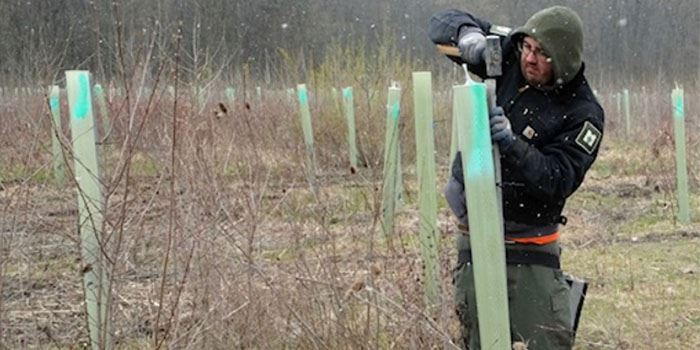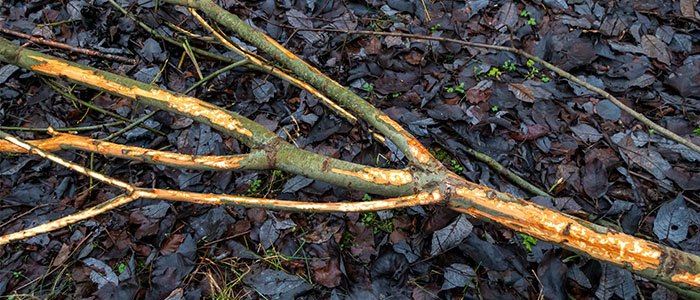The Need for Trees

The process of reforestation in the Metroparks has been happening for many years, and continues today. For the next two years, big plans are in store for parts of Side Cut, Brookwood, Oak Openings Corridor properties, urban sites in east Toledo, and the Secor expansion on an adjacent former golf course.
Approximately 67,000 native trees, covering more than 100 acres, will be planted by the end of 2022!
Trees are essential to northwest Ohio’s ecosystems. Adding trees to the landscape provides great benefits such as canopy cover, food and shelter for wildlife, as well as carbon sequestration to counter greenhouse gas emissions.
Other benefits include the production and release of oxygen, which improves air quality. Trees even absorb harmful pollutants like carbon monoxide, sulfur dioxide and nitrogen dioxide.
Great quantities of rainwater from large rain events are stored by trees, reducing runoff and sediment deposits, improving the water quality in nearby waterways and Lake Erie. Spreading root systems keep soil in place, slowing erosion which results in less silt carried into the Maumee River.
Before settlement, Toledo (or Frogtown, as it was known) was actually a mosaic of habitats, but mostly swamp woodland, wet prairie and marsh. Across the Maumee River was the Great Black Swamp, a forest that harbored large trees and some of the richest, wettest and stickiest soil in the region. The original swamp forests of northwest Ohio were dominated by American elm, black cherry, green ash, sycamore, basswood, walnut and hickory. Just west of Toledo, the Oak Openings region boasted sandy, upland sites, flatwoods and large prairie openings between black, white, red, burr and pin oaks.
Drainage modifications, farming, urbanization and lumbering have dramatically fragmented these landscapes and changed much of it over time. Through reforestation and other restoration efforts, these sites will contribute to a healthier ecosystem, which means greater sustainability of local biodiversity and cleaner air and water for all of us.

Photo: Animal damage on tree bark----caption: 5 ft. plastic tree shelters are installed when planting saplings to protect against rabbit, vole, and deer damage.
Did you know?
Before areas are planted, they are mowed and woody, invasive plants are removed.